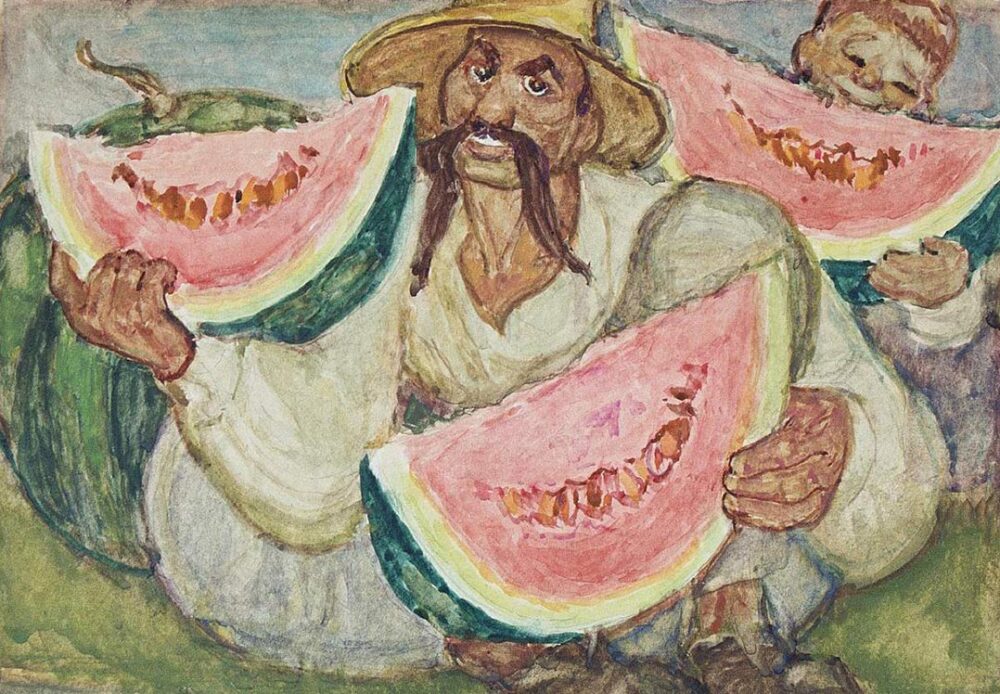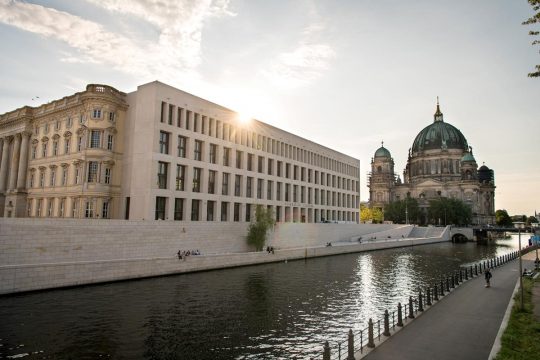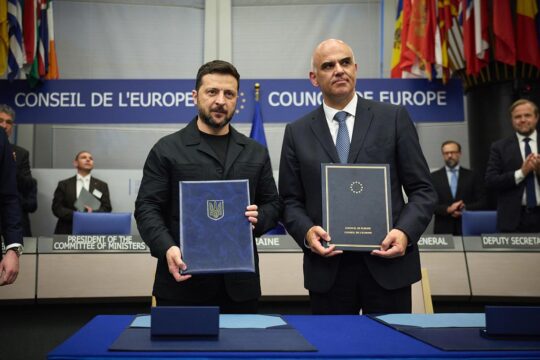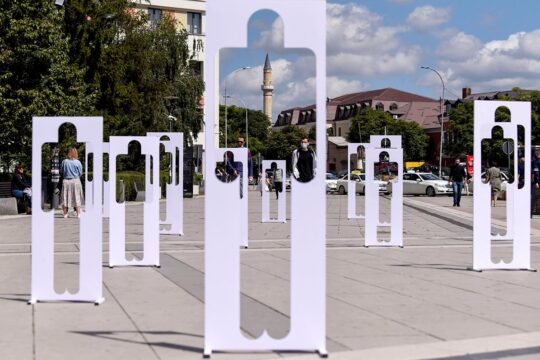On 8 April 2025, in an interview with the Ukrainian news agency Ukrinform, Ukraine’s minister of culture and strategic communications, Mykola Tochytskyi, stated that Russia has stolen over 1.7 million pieces of Ukrainian cultural heritage since the full-scale invasion began in February 2022. He accused Russia of deliberately targeting Ukrainian heritage, a violation of the 1954 Hague Convention, which aims to safeguard cultural property during armed conflict.
“One million seven hundred thousand items of our cultural heritage were stolen from the occupied territories – including archaeological artifacts and museum collections. The Russian Federation has unlawfully appropriated them, in clear violation of all norms of international law. In the past, when Russia stole our name and our history, the looted artifacts were displayed in the Hermitage or museums in Moscow. Now, they are being openly traded on the black market”, said Tochytskyi. By June 2025, the United Nations Educational, Scientific and Cultural Organization (UNESCO) had confirmed damage to 501 historical sites, including 34 museums and 2 archaeological sites.
One of the most striking examples of cultural plunder unfolded in the besieged city of Mariupol, where Russian forces descended upon the Kuindzhi Art Museum, an institution named after the celebrated Ukrainian painter Arkhip Kuindzhi. Inside its walls, the museum held not just paintings and sculptures, but pieces of national heritage, artworks that had survived revolutions, wars, and the passage of time. Among them were original paintings by Kuindzhi himself, luminous with the colors of Ukrainian landscapes, as well as a seascape by Ilya Aivazovsky, portraits and maritime scenes by Nikolay Dubovsky, and an evocative tribute to Kuindzhi by Georgy Kalmykov. There was also a sculpted bust of Kuindzhi, cast by Beklemishev, and a trio of sacred icons, depictions of Christ Pantocrator, the Virgin Mary with Child, and John the Baptist – each irreplaceable, each steeped in spiritual and historical weight.
In a matter of days, more than 2,000 artifacts were stripped from the museum and transported to temporary storage in Donetsk. To lend legitimacy to the act, Russian officials actually filmed the looting, framing it as an effort to “protect the art during military action”. But for Ukrainians, the images told another story, a story of erasure and theft under the guise of preservation. In a move many Ukrainians saw as deeply cynical, the occupation authorities later installed an open-air exhibitionin one of Mariupol’s central parks. But the paintings on display weren’t originals: they were digital replicas of the very works that had been stolen.
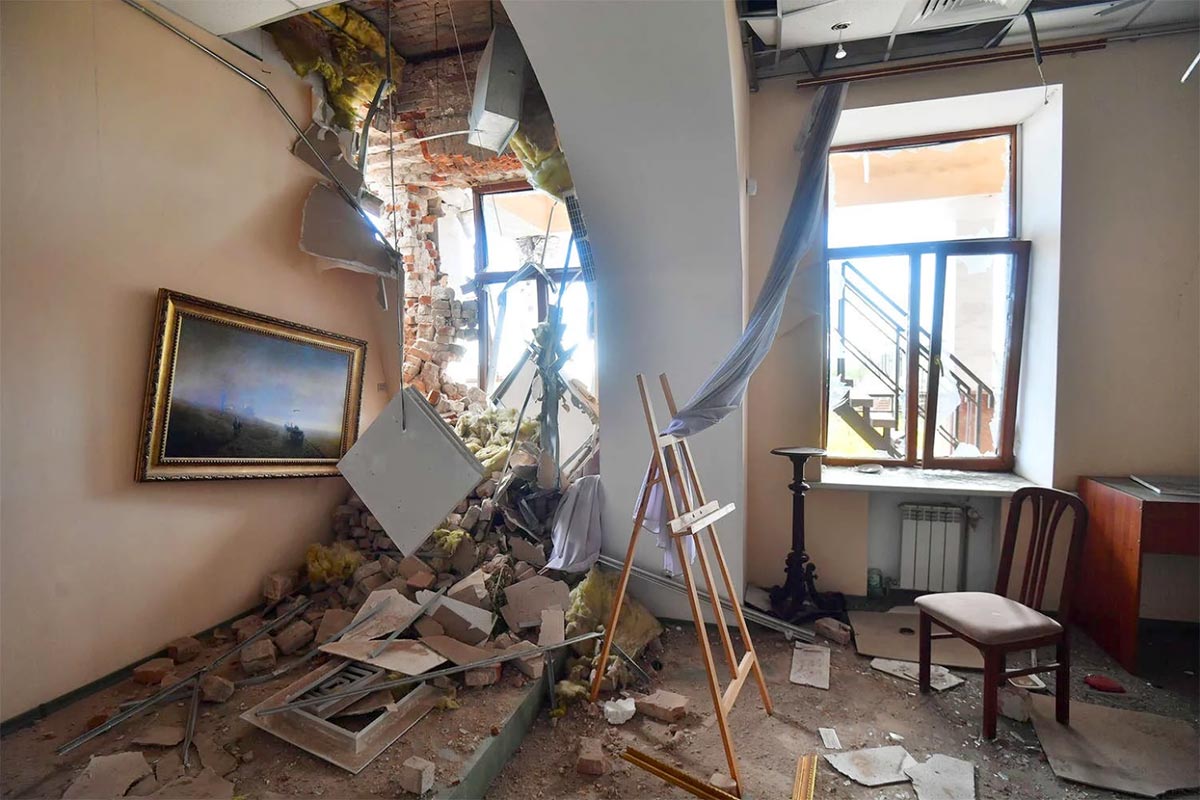
One of the largest thefts since World War II
When Ukrainian forces liberated Kherson in the autumn of 2022, they returned to a haunting scene: the Kherson Museum of Local Lore had been stripped bare. What was once a proud guardian of regional history and culture now stood hollow, its shelves and display cases emptied by Russian occupation authorities. Ukraine’s Minister of culture, Oleksandr Tkachenko, described the looting as one of the largest thefts of museum collections since World War II. “Such mass removal of cultural values from the territory of Ukraine by the Russian occupiers will be comparable to the looting of museums during the Second World War and should be qualified accordingly,” he said in a statement, quoting the Convention for the Protection of Cultural Property in the Event of Armed Conflict of 1954 (The Hague Convention). “The actions of the Russian federation are a violation of international law and will result in both the responsibility of the aggressor state and the criminal responsibility of those involved at the national and international level.”
Among the stolen treasures was a rare and ancient Sarmatian jewelry set dating back to the 1st century BC, one of the museum’s most prized possessions. According to Elena Yeremenko, the museum’s secretary, nearly every section of the building had been ransacked: rooms once filled with imperial-era weapons, coins, medals, and other priceless artifacts were completely cleared out. Only the nature department, with its taxidermy displays, was left untouched. Yeremenko said that the looting occurred in late October 2022. Russian forces used trucks labeled with “Russian Ministry of Emergency Situations” to transport the plundered items.
The Kherson Museum of Regional Art faced a similar fate. Between 30 October and 4 November 2022, as Ukrainian troops launched a counteroffensive, Russian forces emptied the museum’s entire collection into five KamAZ military trucks. Soon after, some photos of the stolen paintings appeared on social media, on display at the Central Museum of Tavrida in Simferopol, in occupied Crimea. But the vast majority of the collection remains missing, its fate unknown.
In November 2022, the representative of the Ukrainian president for the occupied Crimea, Tamila Tasheva, said that since 12 May 2022, the beginning of Russia’s occupation of Kherson, “Russian military forces have been conducting targeted raids on the homes of local historians, collectors, and antique shops”. According to Tasheva, “they seized everything that had even the slightest artistic or historical value. Museum workers were also forced to provide lists of valuable exhibits and individuals for evacuation, including museum employees and their families.”
Tasheva told Justice Info that Russian occupation authorities stole more than 15,000 pieces of fine art and unique historical artifacts from occupied territories. And this number is likely to be a significant underestimate. Many museums in war zones remain inaccessible, damaged, or completely destroyed, leaving a cultural void that may never be fully restored.
European sanctions against museum directors
Art theft in this context is more than just criminal, it is a deliberate act of cultural erasure, said Oksana Semenova, a Ukrainian cultural historian. “The destruction and appropriation of culture is a weapon of war. By erasing memory and stealing heritage, occupiers attempt to rewrite history and replace a nation’s story with their own.”
In June 2023, the European Union imposed sanctions on several individuals involved in the looting of Ukrainian cultural institutions. Among them is Tatyana Bratchenko, director of the Kherson regional Museum of Local Lore, who cooperated with Russian occupation authorities and facilitated the removal of the museum’s collections. Natalya Desyatova, the director of the Kherson regional art Museum, has also been sanctioned for her role during the occupation.
Sanctions were likewise applied to Natalya Kapustnikova, director of the Mariupol Museum of Local Lore. In its decision to impose sanctions on her, the Council of the European Union stated that “she discovered the location of artworks from the Kuindzhi Art Museum of Mariupol and gave those works willingly over to the Russian authorities, who facilitated their transfer to the Local History Museum of Donetsk… This was done without the knowledge or consent of the Ukrainian authorities or the director of the Kuindzhi Art Museum. In acting in this capacity, Natalya Kapustnikova is responsible for supporting and implementing actions and policies which undermine and threaten the territorial integrity, sovereignty and independence of Ukraine.”
Along with Bratchenko and Kapustnikova, the European Council also imposed sanctions on Andrei Malgin, the general director of the Central Museum of Tavrida in Crimea. The Council’s decision states that “art works were transferred from the Kherson Fine Art Museum to the Central Museum of Tavrida in Simferopol, where they are currently kept under his control”, making Malgin responsible for the same offenses.
The sanctions mean that any assets, including bank accounts and properties, held by these individuals in the EU, are to be frozen, and a travel ban to the EU is imposed.
In a communiqué on the destruction of Ukraine's cultural heritage on 16 October 2024, the Congress of local and regional authorities of the European Council talked about “the genocidal dimension” of the attacks on cultural heritage and said it “undermine the very foundations of Ukrainian identity”.
“Especially valuable movable property”
Many artworks and artifacts taken from museums in Mariupol, Kherson, Melitopol, and other occupied areas remain untraceable. Some have resurfaced in exhibitions across Russia and Russian-occupied Crimea, falsely presented as part of the region’s “shared cultural heritage”. In an effort to legitimize the seizure of Ukrainian cultural assets, Russia has enacted several laws that lay the legal groundwork for absorbing museum collections from occupied territories. These measures not only facilitated the transfer of looted items into Russian state institutions but aim to also ensure that they will not be returned.
One key law, enacted on 29 March 2023, establishes a legal framework for managing cultural affairs in the newly incorporated territories, specifically the Donetsk and Luhansk People’s Republics, as well as the Zaporizhzhia and Kherson regions. It outlines regulations for the preservation of cultural heritage, and the administration of libraries, archives and museums. As part of this process, all museum items and collections from these regions must be entered into the state catalogue of the Museum Fund of the Russian Federation by 31 December 2027.
On 12 December 2023, the Russian president Vladimir Putin signed another law codifying the integrity and indivisibility of museum collections. This law designates all items held by museums and used in scientific, educational, or cultural work, as “especially valuable movable property”. As a result, such items are now considered the permanent, non-transferable property of the holding museum, regardless of their origin.
Together, these laws formalize the absorption of Ukrainian cultural heritage into Russian state holdings. Items once housed in Ukrainian museums are now legally classified under Russian management, with no legal mechanism for restitution. What began as the unlawful removal of art and artifacts has, under these legislative changes, been recast as a permanent transfer into the Russian state museum system.
“It’s not our problem”
International law strongly condemns the looting of cultural heritage, particularly during armed conflict, and seeks to protect cultural property through key treaties and conventions. The 1954 Hague Convention obliges states to respect and safeguard cultural property during times of war. In addition, the 1970 UNESCO Convention focuses on preventing the illicit trafficking of cultural property, including its import, export, and transfer of ownership. A Ukrainian prosecutor who investigates art crimes, speaking on condition of anonymity, told Justice Info: “The Russians treat these conventions as if they don’t apply to them. As soon as they occupy an area, they begin emptying museums, art collections, and archaeological sites.”
The 1970 UNESCO Convention also establishes the principle of restitution, meaning that cultural property taken illegally should be returned to its rightful owner, typically the country of origin. However, Christopher Marinello, founder and CEO of the Art Recovery International, a private company specialising in the location and recovery of stolen and looted works of art, warns that the restitution of stolen Ukrainian art from Russia will be extremely difficult. “In my 36 years of professional experience in art recovery, I have not succeeded once in returning an artwork from Russia to its rightful owner,” he says. “Even art stolen by Nazi Germany and later transferred to Russia is not returned. They just say: ‘It’s not our problem’.”
Marinello emphasizes that finding stolen artworks is nearly impossible without a detailed catalogue of missing items. According to Ukrainian prosecutors, in cities like Kherson and Mariupol, Russian forces not only looted the collections but also took the catalogues with them. Ukrainian museum staff who remained behind, along with colleagues from other institutions, are now working to rebuild inventories of lost collections. Despite the immense challenge of recovering art from Russia, Marinello notes that there may still be hope. If stolen pieces surface at international auctions or appear for sale abroad, there may be an opportunity to identify and reclaim them.


